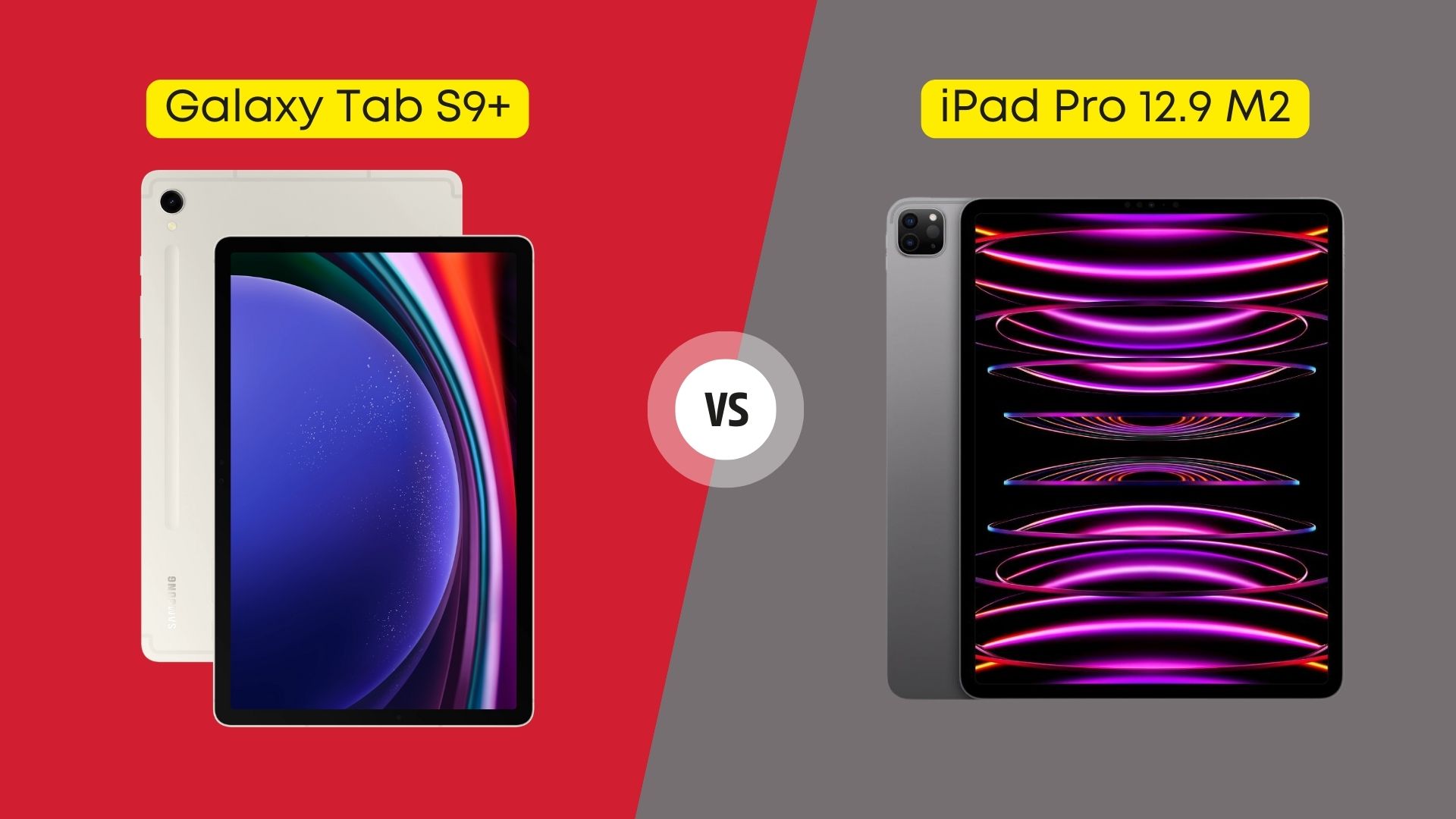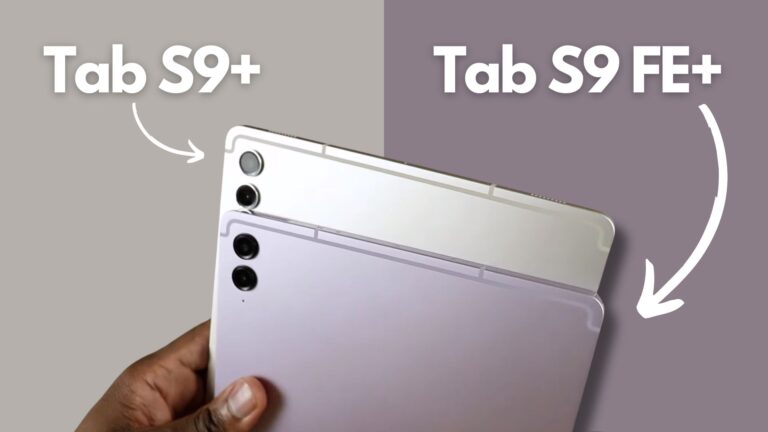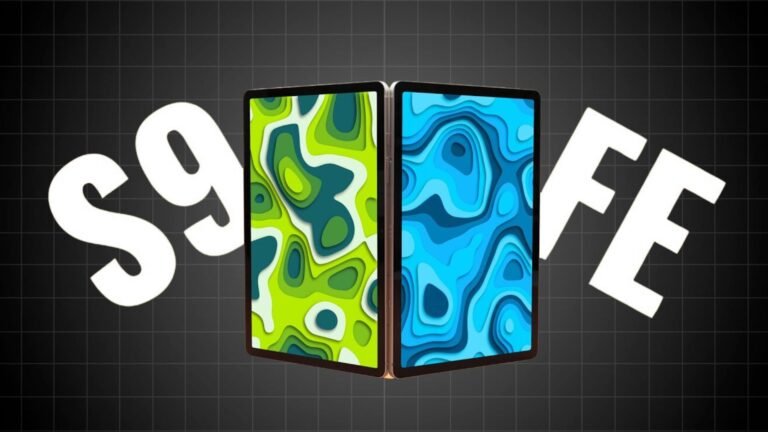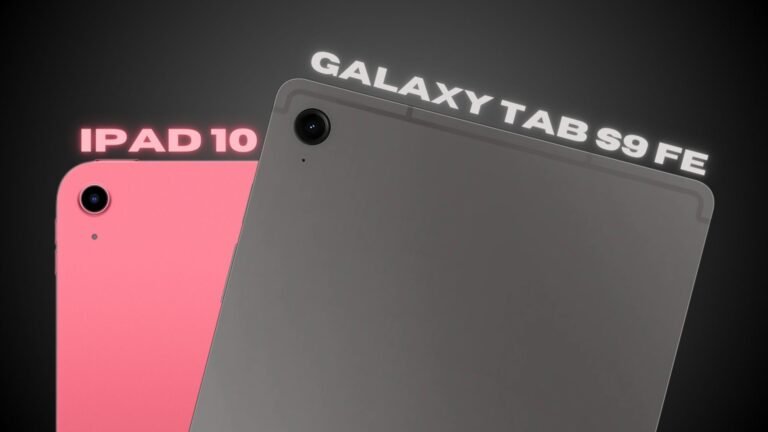| Samsung Galaxy Tab S9+ | iPad Pro 12.9 M2 |
 |  |
| Buy Now | Buy Now |
| Pros | Pros |
| IP68 Rating for Tablet & S Pen. Micro-SD card slot up to 1TB. Comes with S Pen. Best Display for Watching Content. Better Multitasking. | Thunderbolt 4 port. Best Display for Productivity. Apps are generally better optimized. Includes a LIDAR scanner. Leads in benchmark score. |
| Cons | Cons |
| Lower Display Resolution. Some Apps are Not Well Optimised. | Expensive. Battery Life. Buy Apple Pencil Separately ($130) |
Design & Build
| Samsung Galaxy Tab S9+ | iPad Pro 12.9-inch (2022) | |
| Dimensions | 11.24 x 7.30 x 0.22 inches (285.4 x 185.4 x 5.7 mm) | 11.05 x 8.46 x 0.25 inches (280.6 x 214.9 x 6.4 mm) |
| Weight | 586 g | 682.0 g |
| Build | Back: Aluminum; Frame: Aluminum | Back: Aluminum; Frame: Aluminum |
| Biometrics | Fingerprint & Less Secured Face Unlock | 3D Face Unlock |
| Colors | Beige, Graphite | Silver, Space Gray |
Placing the two tablets next to each other in portrait orientation, it’s clear they share similar heights. However, the iPad showcases a wider design. While its slightly increased thickness and weight are noticeable, it doesn’t seem to compromise its portability in any significant way.
These are both premium flagship tablets. Their premium finish is hard to overlook, and reassuringly, neither seems prone to bending. It’s commendable that Samsung has provided an IP68 rating for both the Tab S9+ and its accompanying S Pen, ensuring users like me can feel secure about the device’s resistance to water and dust.
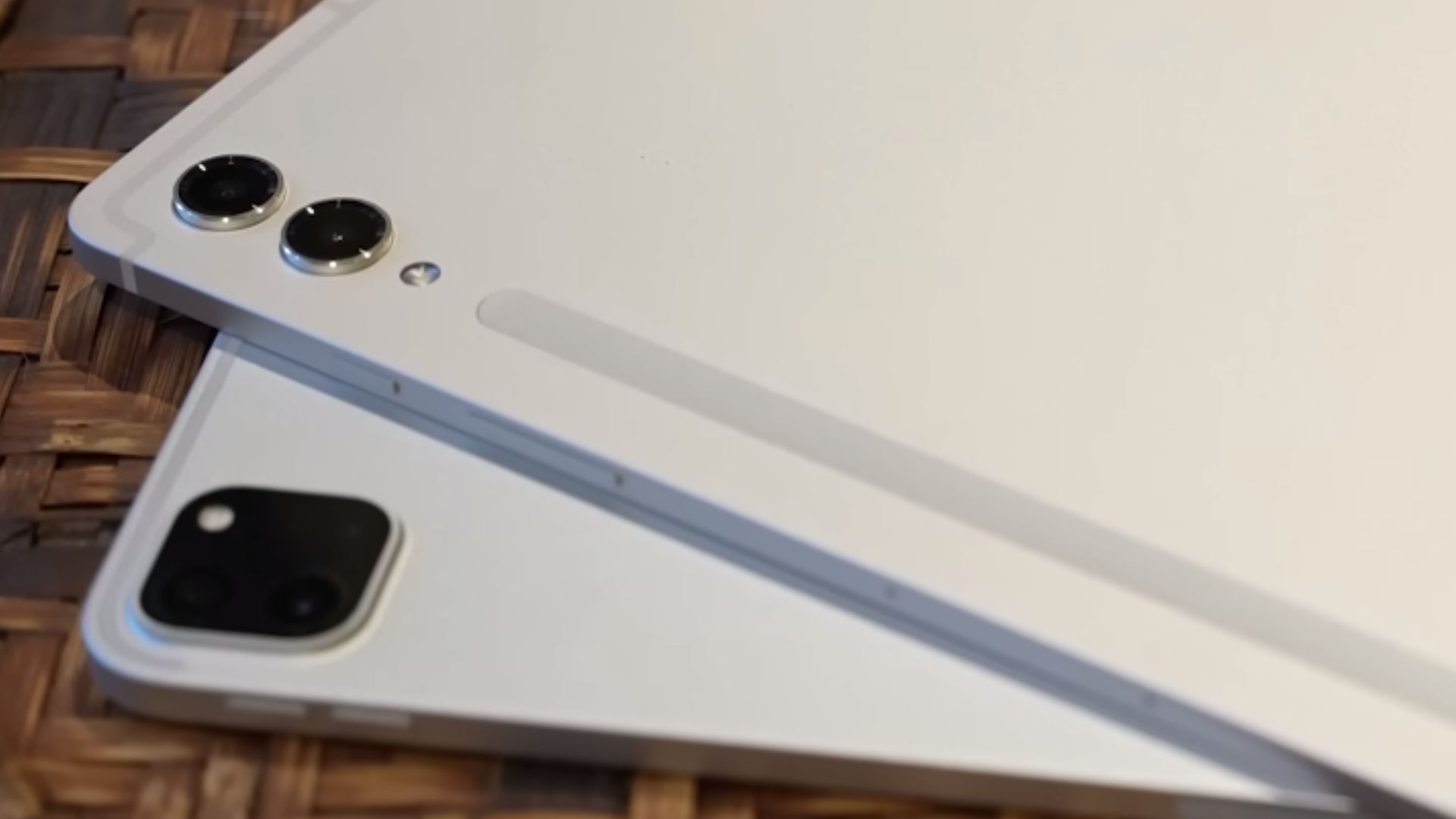
Both tablets have embraced rounded corners, definite squared edges, and are equipped with four speakers, guaranteeing an enjoyable audio experience, especially for those of us who value good sound from our devices.
On the connectivity front, both tablets support USB-C. However, the Tab S9+ comes with a USB 3.2 port, whereas the iPad Pro is a more powerful Thunderbolt 4 port. For the average user, this might not make a difference. But for tech enthusiasts or creators like me, who frequently move large files, the iPad Pro’s faster transfer speeds can be a game-changer.
The Tab S9+, however, gets a nod from me due to its micro-SD card slot, an essential feature for many who love the flexibility of expanding storage without burning a hole in the pocket.
Diving into biometric authentication, there’s a clear distinction. While the iPad opts for Face ID, the Tab S9+ offers an under-display fingerprint sensor and a face recognition feature. All three choices work well for me so it’s really gonna come down to whether you want the more secure facial biometric with the iPad or the versatility of multiple options with a Tab S9+.
Display
| Samsung Galaxy Tab S9+ | iPad Pro 12.9-inch (2022) | |
| Size | 12.4 inches | 12.9 inches |
| Resolution | 1752 x 2,800 pixels, 16:10 ratio, 266 PPI | 2048 x 2732 pixels, 4:3 ratio, 265 PPI |
| Technology | Dynamic AMOLED | Liquid retina XDR |
| Refresh rate | 120Hz | 120Hz |
| Features | HDR support, Scratch-resistant glass (Corning Gorilla Glass 5), Ambient light sensor | HDR support, Oleophobic coating, Ambient light sensor |
The Tab S9+ has a 12.4-inch dynamic AMOLED 2X display with a resolution of 1752 x 2,800, a 16:10 aspect ratio, 120 Hertz adaptive refresh rate and 266 pixels per inch. The iPad Pro has a larger 12.9-inch liquid retina XDR display with a high-resolution of 2048 x 2732, an aspect ratio of 4:3, 120 Hertz adaptive refresh rate and a pixel density of 265 pixels per inch.
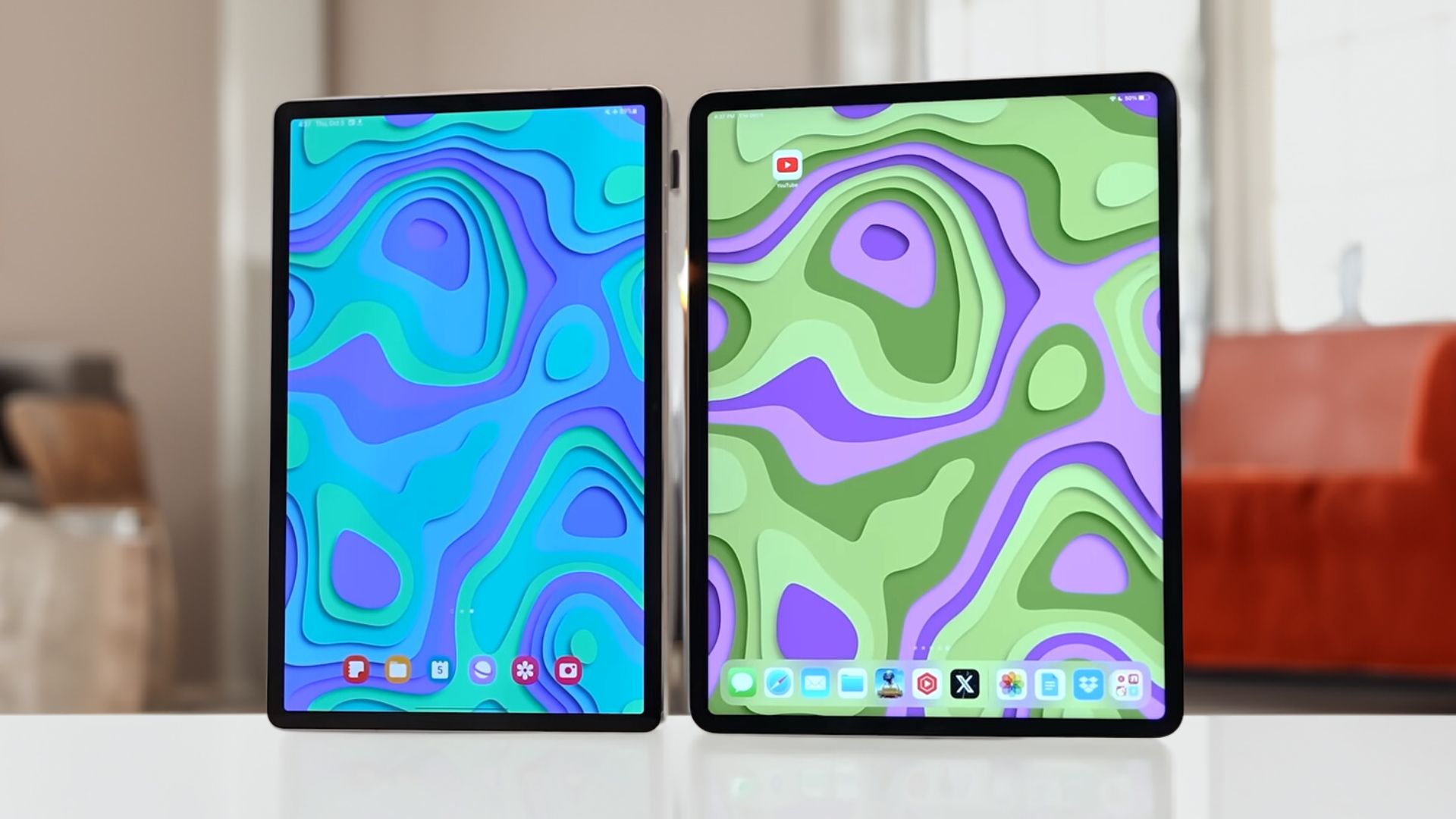
These are the best displays that Apple and Samsung have to offer in a tablet. When viewing content, both provide almost identical viewing areas, though the iPad Pro might have slightly more pronounced black borders.
An added advantage of the iPad Pro is its superior brightness for both SDR and HDR content. This might not be a significant factor indoors, but it becomes crucial outdoors or in bright environments where reflections are common.
In terms of content visibility, the iPad Pro displays more content when held in portrait mode, reducing the need to scroll. This advantage is consistent even when you switch to landscape mode.
Keyboard & Stylus
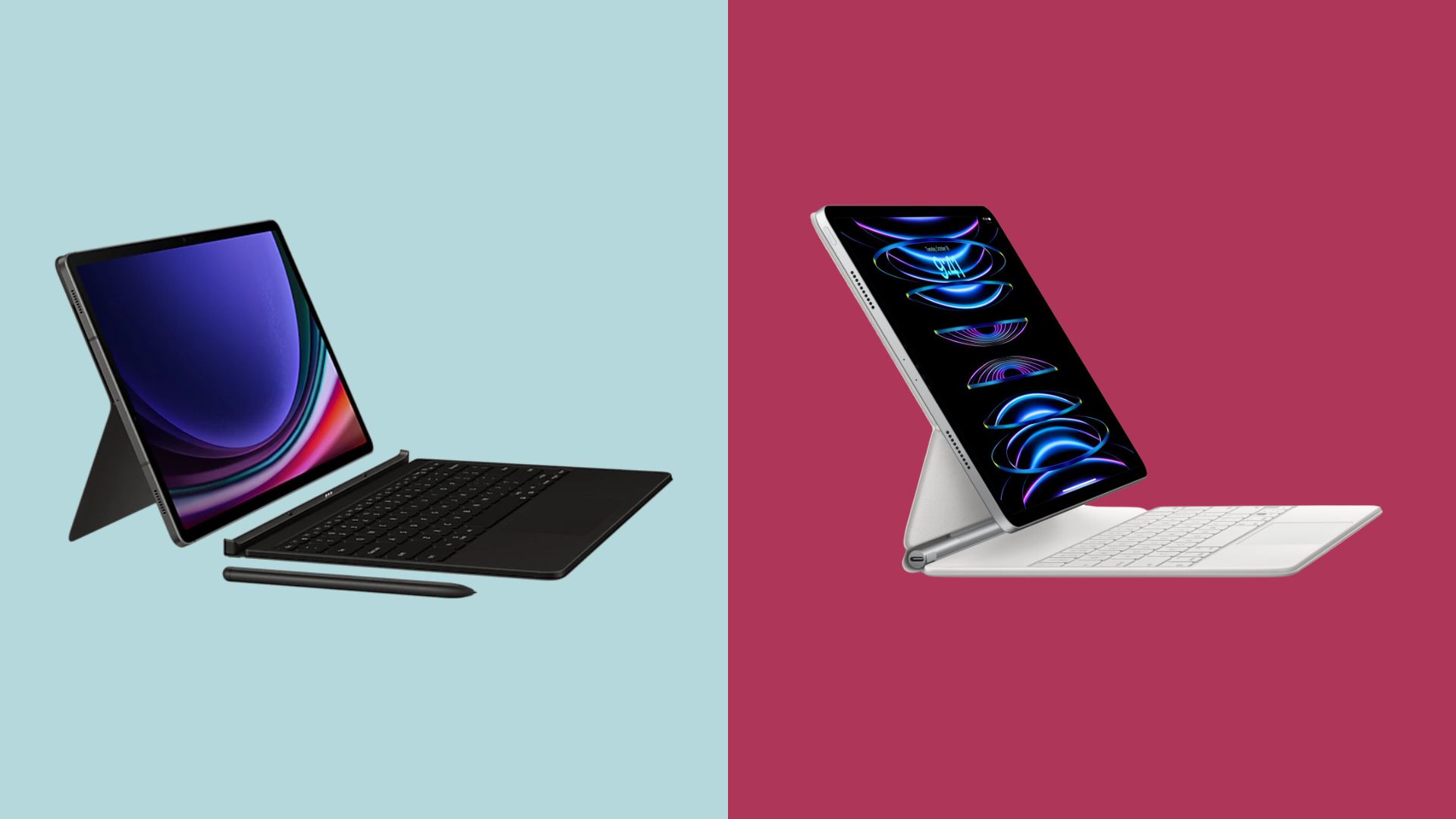
The iPad Pro is compatible with Apple’s larger magic keyboard and also some excellent third-party options. The Tab S9+ is compatible with two different versions of the book covered keyboard from Samsung. Both tablets, however, can connect to external Bluetooth keyboards.
From a personal perspective, I have a soft spot for the tactile sensation of the Magic Keyboard’s keys, and its trackpad outshines its competitors. An added advantage is its USB-C passthrough, enabling users to charge the iPad while simultaneously connecting other accessories. Samsung’s keyboards for the Tab S9+ shine in securing the S Pen effectively, ensuring it remains intact even inside a bag, and they also feature a dedicated function key row.
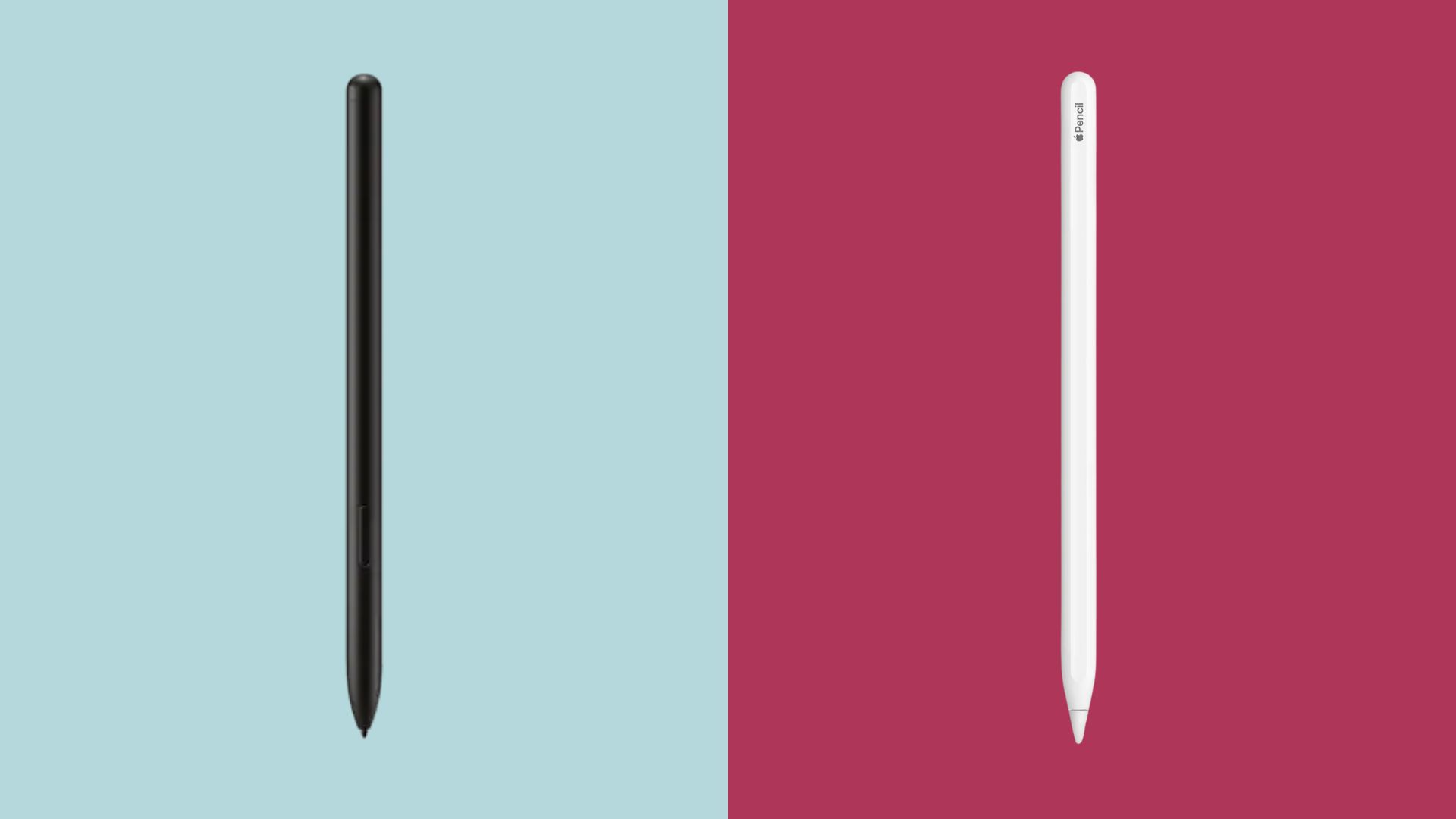
The iPad Pro is compatible with the second-generation Apple Pencil. It pairs wirelessly. It can be stored and charged on the side of the iPad and it costs $130. The Tab S9+ comes with a free S Pen, which also pairs wirelessly. It can be stored on the side or the back of the Tab S9+, but it will only charge on the back.
A distinguishing feature of the S Pen is its customizable button, reminiscent of Apple’s double-tap function, enhanced with Bluetooth functionalities for tasks like snapping photos or controlling media playback. Notably, while the S Pen requires charging only for these Bluetooth functions, the Apple Pencil needs power for all its operations.
Now both stylus options offer very low latency, but the feeling of writing or drawing is actually quite different. The Apple Pencil, with its firm tip, offers a sensation akin to writing on a solitary sheet of paper on a solid surface, resulting in a slightly more rigid feel against the tablet’s glass. In contrast, the softer tip of the S Pen provides a cushioned feeling, reminiscent of writing on a thick notepad where the pages yield under pressure.
App Availability and OS Support
Both the Google Play Store and the Apple App Store are brimming with applications, ensuring that most users will find what they’re looking for.
Specifically, for those into creative tasks, apps like Affinity Photo and Procreate are exclusive to the iPad. If these tools are crucial for your tasks, the iPad might be your best bet.
While LumaFusion was once exclusive to the iPad, it has made its way to Android, which is a welcome addition. However, another advantage for the iPad is that now you can use Final Cut Pro.
In the realm of note-taking, the iPad offers Notability, but Android users can benefit from Good Notes. Additionally, the Tab S9+ comes with the impressive Samsung Notes pre-installed.
When comparing the two, the iPad Pro seems to have a slight advantage, primarily because its apps are generally better optimized for tablet use. In contrast, many apps on the Tab S9+ feel like enlarged phone applications.
Regarding OS support, Apple’s track record of long-term support is commendable. Even though Samsung has stepped up with four years of OS updates and an additional year of security patches, Apple still has the advantage here if that’s a priority for you.
Cameras
| Samsung Galaxy Tab S9+ | iPad Pro 12.9-inch (2022) | |
| Main Camera | 13 MP, f/2.0, 26mm (wide), 1/3.4″, 1.0µm, AF 8 MP, f/2.2, (ultrawide) 4K@30fps, 1080p@30fps | 12 MP, f/1.8, (wide), 1/3″, 1.22µm, dual pixel PDAF 10 MP, f/2.4, 125˚ (ultrawide) 4K@24/25/30/60fps, 1080p@25/30/60/120/240fps; gyro-EIS, ProRes, Cinematic mode (4K, 1080p) |
| Front Camera | 12 MP, f/2.4, 120˚ (ultrawide) 4K@30fps, 1080p@30fps | 12 MP, f/2.4, 122˚ (ultrawide) 1080p@25/30/60fps, gyro-EIS, HDR |
Both tablets have an ultra-wide 12-megapixel front facing camera. The iPad Pro record it up to 1080p 60FPS. The Tab S9+ can go up to 4K 30FPS.
When it comes to video calls, the camera placement on the Tab S9+ is preferable. Positioned at the center of its long edge, it ensures that the user is well-framed during calls, creating the impression of making direct eye contact with the other person. In contrast, the camera on the iPad Pro is located on the short side. As a result, when users are viewing the screen, it appears as though they are glancing to the side rather than directly at the person they are speaking with.
Shifting focus to the rear cameras, the Tab S9+ is equipped with a 13-megapixel wide-angle lens and an 8-megapixel ultra-wide lens. In comparison, the iPad Pro has a 12-megapixel wide-angle and a 10-megapixel ultra-wide lens. While both devices feature a flash, the iPad Pro has an added advantage with its LIDAR scanner. This scanner significantly improves autofocus and low-light performance and is beneficial for augmented reality applications.
Multitasking
Both the iPad Pro and Tab S9+ offer impressive multitasking features. The iPad Pro lets you open two apps side by side, use split view, and even have a central popup window. On the other hand, the Tab S9+ can display three apps at once, and you can adjust their sizes. Plus, it has pop-up windows too.
Both tablets can double as a second screen for your computer. Apple names this “sidecar,” while Samsung terms it “second screen.”
A standout feature of the Tab S9+ (and its variants) is the DeX mode, transforming it into a desktop-like experience. Apple has introduced the stage manager for the iPad Pro, enhancing its multitasking abilities.
In summary, while the iPad Pro offers smooth multitasking, the Tab S9+ might have an edge with its DeX feature and ability to display more apps simultaneously. So, I would consider it the more capable multitasking option, but it would ultimately come down to what you prioritize and which ecosystem you’re in.
Performance & Benchmarks
| Samsung Galaxy Tab S9+ | iPad Pro 12.9-inch (2022) | |
| System chip | Snapdragon 8 Gen 2 For Galaxy | Apple M2 |
| Processor | Octa-core, 1x 3.36GHz Cortex-X3 + 2x 2.8GHz Cortex-A715 + 2x 2.8GHz Cortex-A710 + 3x 2.0GHz Cortex-A510 | Octa-core |
| GPU | Adreno 740 | Apple 10-core GPU |
| RAM | 12GB | 8GB |
| Storage | 256GB | 128GB |
| Storage expansion | microSDXC up to 1024 GB | Not expandable |
| OS | Android (13) | iPadOS (16.x) |
The iPad Pro comes with the M2 chip which is the most powerful chip in any tablet. Every model up to 512GB of storage comes with 8GB of RAM. And the 1TB and 2TB models come with 16GB of RAM. The Tab S9+ comes with the Qualcomm Snapdragon 8 Gen 2 chip, and both the 256GB and the 512GB models come with 12GB of RAM.
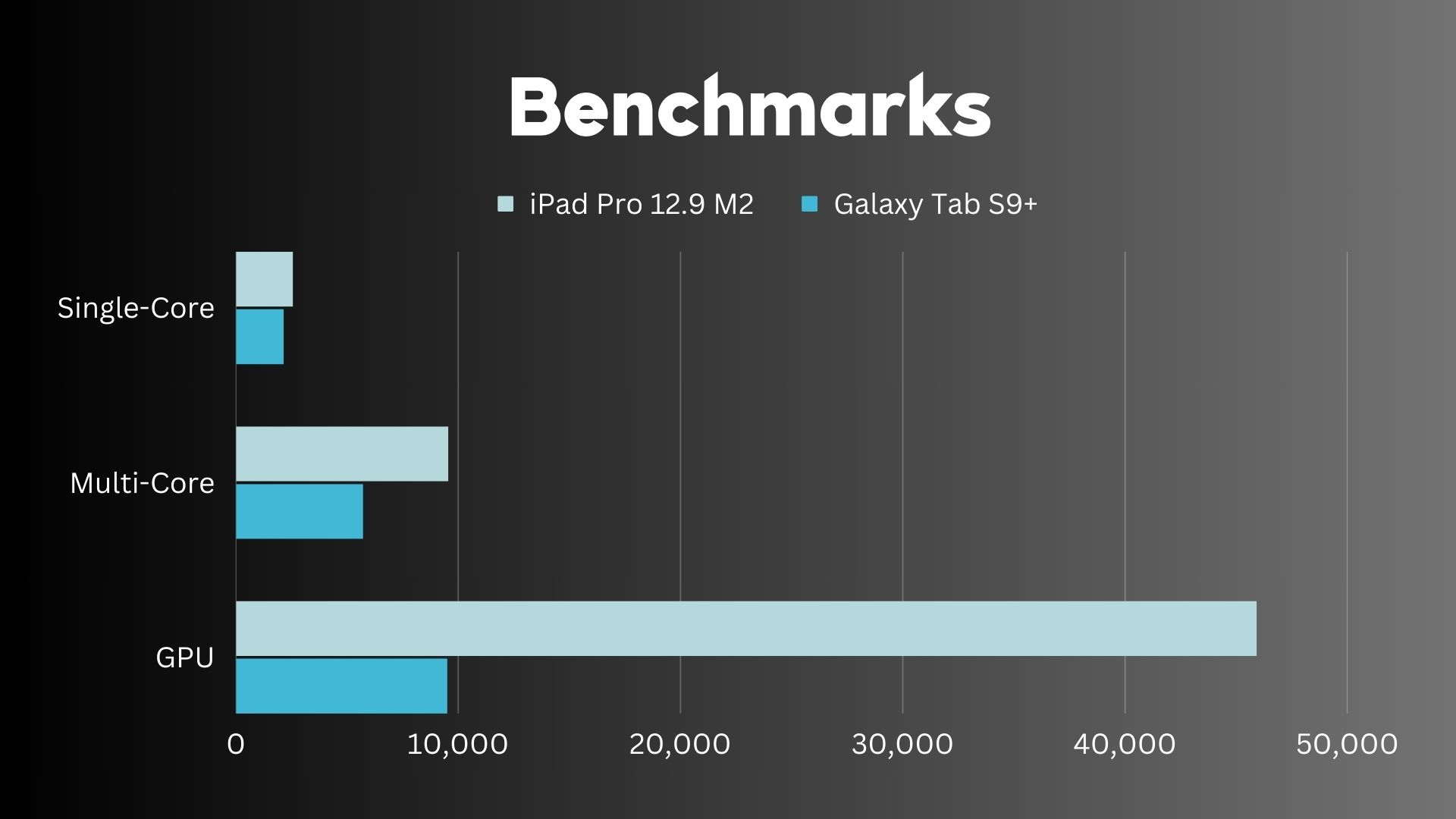
Benchmark tests reveal that the iPad Pro leads in both single-core and multi-core performance, with an even wider margin in GPU performance. However, for everyday users who aren’t editing high-resolution videos, this might not be a significant factor. But having a more powerful device does mean it’s likely to serve you well for a longer time as software demands increase.
When it comes to gaming, both tablets excel. Popular games like PUBG, COD Mobile, and Genshin Impact run smoothly on both. However, the iPad Pro’s superior performance gives it an edge, especially considering future game demands.
Samsung’s decision to use the Qualcomm Snapdragon 8 Gen 2 chip in the Tab S9+ has led to improved battery life. In practical use, the Tab S9+ lasts a few hours longer than the iPad Pro during a typical day. As for charging speeds, the iPad Pro charges about 10 minutes faster than the Tab S9+ when using a high-capacity charger.
Which One You Should Buy?
The Galaxy Tab S9+ is an excellent choice for those who prioritize versatility, expandable storage, and a desktop-like experience with DeX. Its lower starting price, inclusive of the S Pen, also makes it a more budget-friendly option.
On the other hand, the iPad Pro stands out for its superior display, performance, and app optimization. It’s ideal for users deeply invested in the Apple ecosystem or those who prioritize high-end creative tasks.
Ultimately, the decision boils down to individual preferences, needs, and budget constraints. Both tablets are flagship devices from their respective brands and offer a premium experience.
